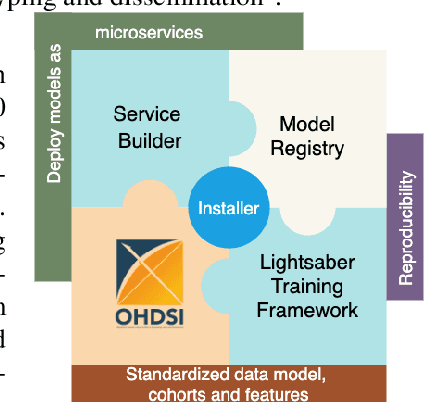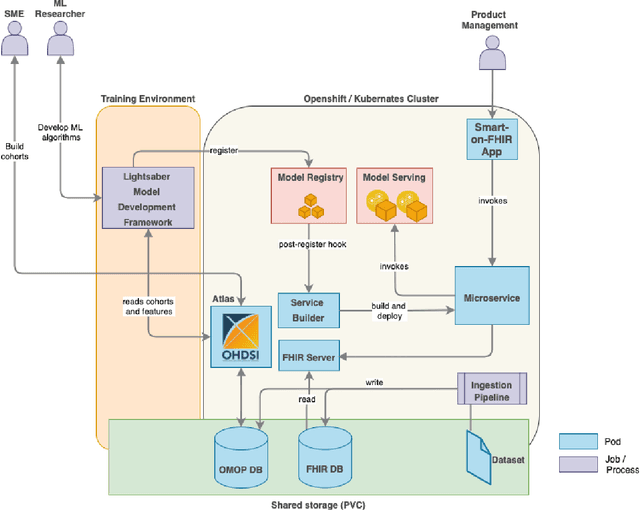Sekou Remy
Disease Progression Modeling Workbench 360
Jun 24, 2021

Abstract:In this work we introduce Disease Progression Modeling workbench 360 (DPM360) opensource clinical informatics framework for collaborative research and delivery of healthcare AI. DPM360, when fully developed, will manage the entire modeling life cycle, from data analysis (e.g., cohort identification) to machine learning algorithm development and prototyping. DPM360 augments the advantages of data model standardization and tooling (OMOP-CDM, Athena, ATLAS) provided by the widely-adopted OHDSI initiative with a powerful machine learning training framework, and a mechanism for rapid prototyping through automatic deployment of models as containerized services to a cloud environment.
WNTRAC: Artificial Intelligence Assisted Tracking of Non-pharmaceutical Interventions Implemented Worldwide for COVID-19
Sep 16, 2020



Abstract:The Coronavirus disease 2019 (COVID-19) global pandemic has transformed almost every facet of human society throughout the world. Against an emerging, highly transmissible disease with no definitive treatment or vaccine, governments worldwide have implemented non-pharmaceutical intervention (NPI) to slow the spread of the virus. Examples of such interventions include community actions (e.g. school closures, restrictions on mass gatherings), individual actions (e.g. mask wearing, self-quarantine), and environmental actions (e.g. public facility cleaning). We present the Worldwide Non-pharmaceutical Interventions Tracker for COVID-19 (WNTRAC), a comprehensive dataset consisting of over 6,000 NPIs implemented worldwide since the start of the pandemic. WNTRAC covers NPIs implemented across 261 countries and territories, and classifies NPI measures into a taxonomy of sixteen NPI types. NPI measures are automatically extracted daily from Wikipedia articles using natural language processing techniques and manually validated to ensure accuracy and veracity. We hope that the dataset is valuable for policymakers, public health leaders, and researchers in modeling and analysis efforts for controlling the spread of COVID-19.
Subset Scanning Over Neural Network Activations
Oct 19, 2018



Abstract:This work views neural networks as data generating systems and applies anomalous pattern detection techniques on that data in order to detect when a network is processing an anomalous input. Detecting anomalies is a critical component for multiple machine learning problems including detecting adversarial noise. More broadly, this work is a step towards giving neural networks the ability to recognize an out-of-distribution sample. This is the first work to introduce "Subset Scanning" methods from the anomalous pattern detection domain to the task of detecting anomalous input of neural networks. Subset scanning treats the detection problem as a search for the most anomalous subset of node activations (i.e., highest scoring subset according to non-parametric scan statistics). Mathematical properties of these scoring functions allow the search to be completed in log-linear rather than exponential time while still guaranteeing the most anomalous subset of nodes in the network is identified for a given input. Quantitative results for detecting and characterizing adversarial noise are provided for CIFAR-10 images on a simple convolutional neural network. We observe an "interference" pattern where anomalous activations in shallow layers suppress the activation structure of the original image in deeper layers.
 Add to Chrome
Add to Chrome Add to Firefox
Add to Firefox Add to Edge
Add to Edge